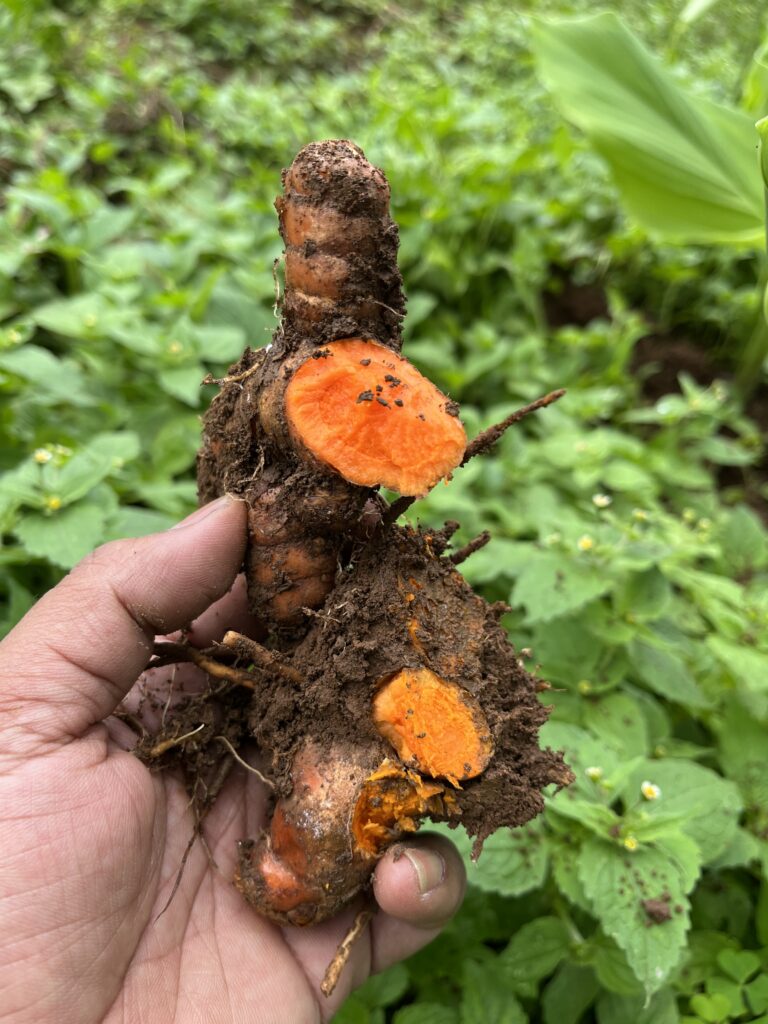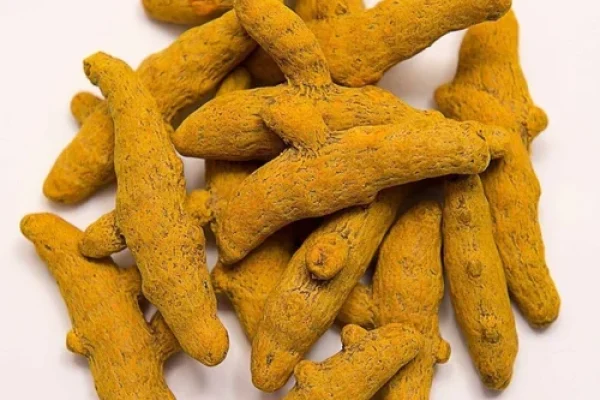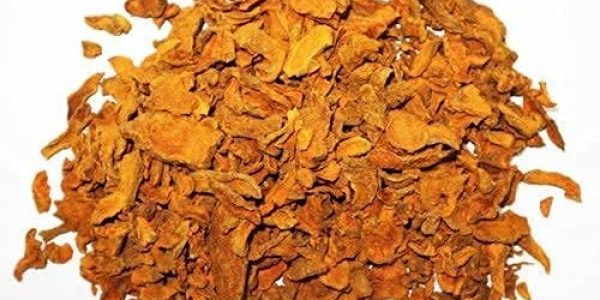🌿 Lakadong Turmeric: The Golden Spice of Meghalaya
1. Origin in India
Lakadong Turmeric is a rare and premium variety of turmeric grown exclusively in the Lakadong region of Jaintia Hills, Meghalaya, in northeast India.
The unique climatic conditions, rich black soil, and high altitude of this area contribute to the exceptional quality of Lakadong turmeric.
Unlike commercial turmeric varieties, Lakadong is cultivated by indigenous tribal farmers using traditional, organic farming methods passed down through generations.
2. Distinctive Features & Uses
High Curcumin Content: Lakadong contains 7–12% curcumin, significantly higher than regular turmeric (typically 2–3%).
Deep Yellow-Orange Color and strong earthy aroma.
Uses:
As a spice in cooking for flavor, color, and aroma (curries, rice dishes, herbal teas).
As a health supplement in golden milk (haldi doodh), turmeric lattes, or immunity drinks.
In cosmetics (face masks, creams) and traditional skincare routines.
As a natural dye and in Ayurvedic therapies.
3. Medicinal Properties
Anti-inflammatory & Antioxidant: Curcumin fights inflammation and oxidative stress—helpful for joint pain, arthritis, and overall immune support.
Boosts Immunity: Traditionally used in Indian households to ward off colds, coughs, and infections.
Supports Liver Health: Aids in detoxification and improves digestion.
Anti-cancer potential: Ongoing studies show curcumin may reduce growth of cancerous cells.
Natural Antiseptic: Used in wound healing, and skin conditions like acne, eczema.
Brain Function: Curcumin may improve memory and reduce risk of neurological disorders.
4. Harvesting Process
Lakadong turmeric is generally harvested once a year (December–February) after 7–9 months of growth.
The process is completely manual and organic:
Hand-harvested using small tools without machines.
Turmeric rhizomes are cleaned thoroughly in water.
Boiled to remove rawness and kill microbes.
Sun-dried for several days until completely moisture-free.
Finally, hand-pounded or stone-ground into powder to retain its natural oils and aroma.
5. Sustainability & Farmer Empowerment
Cultivation of Lakadong turmeric helps in:
Promoting organic farming in remote tribal areas.
Empowering women and indigenous communities who manage small land holdings.
Preserving biodiversity and traditional farming practices.
6. Why Choose Lakadong Over Regular Turmeric?
| Property | Regular Turmeric | Lakadong Turmeric |
|---|---|---|
| Curcumin Content | 2–3% | 7–12% |
| Taste & Aroma | Mild | Strong, earthy, aromatic |
| Grown in | Pan India | Only in Lakadong, Meghalaya |
| Farming Method | Often commercial | 100% organic & traditional |




